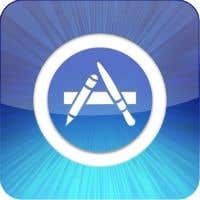27 February 2014 We are beginning a new weekly feature today, a nod to the Throwback Thursday phenomenon whereby keen users of social media republish something (typically an Instagram image) from their archives. Every Thursday we will be sharing something with everyone, either an article that was initially for members only and/or something we'd like to remind you of. Today, we're sharing Richard's really useful review of wine-label scanning apps that was originally for Purple Pagers only.
App markets are awash with flashy programs designed to tempt wine drinkers. Scrolling through the endless icons and made-up names must be as confusing as wine shelves are to the uninitiated.
The latest craze is for technology that can identify wines from photos of labels taken by your device’s camera. Such a feat seems incredibly complex when you think of the millions of wine labels in the world, and the profusion of producer names, classifications, vintages, special cuvées, appellations, crus, Prädikats ...
Yet exist they do. Using an iPhone, I trialled six such apps (plus three others that do something similar but without label scanning). In the end, there was no competition, with one app far outshining the rest.
I chose six wines (pictured below) with which to test each app. Some are fairly well known wines with clear labelling, others are decidedly obscure in both aspects. So how would they fare? Full reviews follow below, presented in increasing score order.
LABEL-SCANNING APPS
Corkbin
Cost: free
In-app purchases: none
Simple and easy enough to use, with clean design and easy navigability. On first loading it crashed several times. Then it worked – except it didn’t. None of the wines I photographed were identified, instead I was sent a message that I should wait a few minutes. I’m still waiting. Not recommended.

Wines identified: 0/6
Identification accuracy: 0
Score: 0/10
Snooth pro
Cost: £2.99
In-app purchases: none
This crashed every time I took a photo, freezing on the screen shown below. A total waste of time and money.
Wines identified: 0/6
Identification accuracy: 0
Score: 0/10
Hello Vino
Cost: free
In-app purchases: £0.99 for 5 scans; £2.99 for unlimited scans
Mercifully, the label recognition technology worked (once you paid for it) – but not brilliantly. It identified half of the labels correctly, offering a range of options for those it couldn’t. As you can see for the left-hand image below, it claims that a person is individually processing the label, but the result of scanning the Weinbach, Cuvée Laurence Gewurztraminer label suggests that it uses automatic text-recognition software instead – which would explain why it offered a Châteauneuf-du-Pape with the same cuvée name.

Hello Vino has additional features including a simple star rating system, reviews, deals and an instant purchase option – although this didn’t work for any of the six wines I eventually tested. It also crashed once. Overall, it leaves the impression that it doesn’t quite work.
Wines identified: 3/6
Identification accuracy: 75% (even when a wine was identified, I needed to correct vintage or grape variety)
Score: 3/10
Drync
Cost: free
In-app purchases: none
Like Hello Vino, this is a well-made app that was wrong half of the time, which quickly became tedious. It was fast and easy to use, but some of the options it offered (as pictured for the Weinbach Gewurztraminer) were ultimately unhelpful because you couldn’t see the full name before selecting it, and there seemed to be lots of messy, duplicated entries. This doesn’t inspire confidence.
Wines identified: 3/6
Identification accuracy: 50% (again, even when it found the right wine, you would often need to correct it)
Score: 3/10
Vivino
Cost: free
In-app purchases: £2.99 to upgrade to pro
This app is rightfully successful because it handles label recognition much more convincingly than most of the competition. It is quick and intelligent, and it identified all of the wines correctly, although as usual there were certain edits required – usually to correct the vintage. There were a few idiosyncrasies in this regard. For instance, the vintage it suggested for the Comtes de Champagne was 2001, which doesn’t exist.
However, one very impressive service is the manual identification of wines it will automatically offer when it doesn’t recognise a label. This was the case for the Marquis de Calon 1995, which was correctly identified within 30 minutes. This delay might be annoying if you needed to do something instantly – as is so often the case with mobiles, and our general modern impatience – but getting a correct result is worth a small wait, compared with the confusion of data in some other apps.
The pro feature allows you to ‘keep track of your collection’ in a way that didn’t tempt me to purchase it. User reviews and scores are accessible in the free version.

Wine identification: 6/6
Identification accuracy: 50% (most wines needed a small correction, but this was easily done)
Score: 8/10
Delectable
Cost: free
In-app purchases: none
After the minor annoyance of having to register an account to access this app upon first using it, Delectable is a brilliant, brilliant piece of programming. It defeats every other label-recognition app on the market for one simple reason: it identified every label 100% accurately with no corrections required.
This is a quite remarkable feat, and clearly sets it apart from the competition. The only drawback is that each label took some time to be identified (although no more than 15 minutes on average, from my experience). What they have created is a system that clearly sacrifices speed for accuracy – but when you are dealing with wine, that is a sensible choice.
Furthermore, the design, function and navigability are all very well realised, making it easy and enjoyable to use. They have seamlessly integrated sharing on Twitter and other social-media providers, but also have a compelling social aspect within the app itself. Within a few taps and swipes, you can find other users tasting the same wine you have just photographed, and read their reviews and scores. Following people allows you to keep track of what people are drinking, and this includes several wine personalities, including Gary V and our own Alder Yarrow.
Delectable takes an ambitious idea and makes it work, simply and effectively. Patience may be required for it to identify wines – but patience is a virtue. Especially where wine is concerned.

Wines identified: 6/6
Identification accuracy: 100%
Score: 10/10
Other wine apps
Here are three other apps that don’t offer label scanning.
Cor.kz
Cost: free
In-app purchases: none
This is a pretty well known app, much loved for its integration with the CellarTracker database. Instead of label recognition, it offers barcode scanning. For products without barcodes you can type in the details (or the CellarTracker ID) and the extensive CellarTracker database will come up trumps more often than not. It has a wealth of information and functionality, and is surely the best way of managing your CellarTracker account via a mobile device.

WineJot
Cost: $2.99 (not currently available in the UK)
In-app purchases: n/a
This is a fairly simple note-taking app (with connectivity to Evernote) with some preset options for specifying colour, flavour and aroma descriptors. You can take photos of labels and attach them to the notes – although there is no recognition feature. I can imagine it being temporarily useful for beginners.
Wine-searcher
Cost: free
In-app purchases: n/a
The ubiquitous wine price comparison website has an app that offers all of the site’s features in a convenient and well-designed way. It’s quick, accurate and full of useful information – in terms of buying wine, there is really nothing better. As with the website, unlocking the full range of listings requires an annual subscription.






